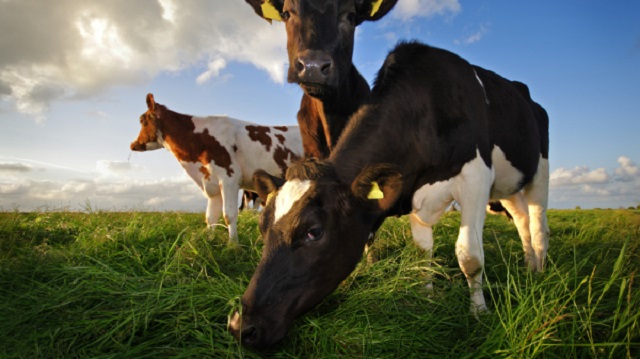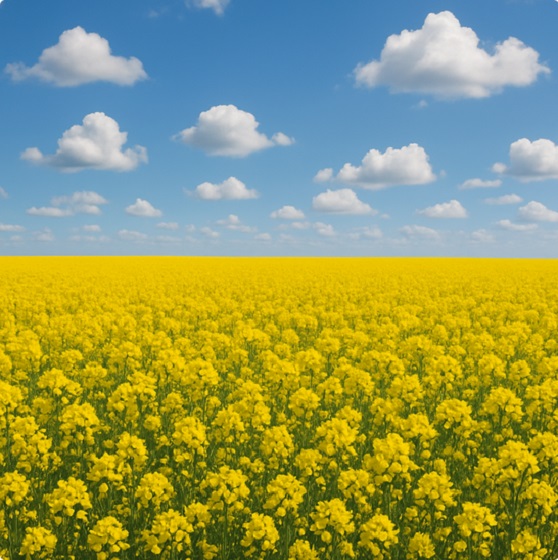Agriculture
While Europeans Vacation, Denmark Attacks Livestock Farmers With Cow Tax

From Heartland Daily News
By Andrew Weiss
Economics aside, this policy will have no effect on global temperatures. Even if the entire European Union halted all emissions (including livestock) the global temperatures would be reduced by only 0.12 degrees Celsius by the year 2100, assuming the highest climate sensitivity to carbon.
As Europeans generate greenhouse gas emissions by driving or flying off on their long summer holidays, Denmark is trying to lower those emissions by taxing cow burps and flatulence to combat climate change.
The Danish government believes that taxing methane produced by animals will improve the lives of citizens by lowering global temperatures. Therefore, beginning in 2030, livestock farmers will be taxed $17 per ton of carbon dioxide-equivalent emitted by their livestock. That tax will increase to $43 by 2035.
The average cow emits the CO2 equivalent of about three tons per year in methane, so each cow will cost farmers $50 in 2030, reaching about $125 by 2035.
Other livestock such as sheep and pigs are also subject to the methane tax, but they emit less methane because of differences in the chemistry of their digestive systems.
But two professors—William A. van Wijngaarden of York University in Canada and William Happer of Princeton University—argue that restrictions on methane emissions are “not justified by facts.”
CO2 currently makes up about 420 ppm (parts per million), which is 0.042% of the atmosphere. Methane is a much lower 1.9 ppm, or about 0.0002% of the atmosphere.
Methane is increasing in the atmosphere at a rate of about 0.0076 ppm per year, while CO2 is increasing at a rate 300 times faster, or 2.3 ppm a year.
The methane molecule is about 30 times better at trapping heat than the carbon dioxide molecule. Therefore, methane contributes about one-tenth the warming of CO2.
Effect on the Economy
Denmark’s new animal tax will raise food prices. Prices for beef and milk will go up, percolating throughout the nation’s economy. Denmark’s economy contracted 1.8% last quarter and the inflation rate is 2.1%, but expect to see inflation increase with the new animal tax. The tax will disproportionately affect middle-income earners and the poor.
At the same time, farmers will see smaller profit margins. Some farmers will reduce their numbers of cows and shift to other animals or grain. Others might sell their farms and change occupations.
In America, the majority of beef farms are run by small operations. According to the U.S. Department of Agriculture, 54% of farms with beef cattle had fewer than 20 cows. On such a farm, raising a cow costs about $900 per year.
A U.S. methane tax identical to Denmark’s would be the same as an additional 15% tax on cattle. This would be devastating to small ranchers who are already pinched by increased overhead costs.
The Danish policy taxes carbon at $43 per ton. This so-called social cost of carbon is priced even higher here in America, and is an easily manipulated price tag that the government puts on carbon emissions.
Last fall, the U.S. Environmental Protection Agency proposed $190 per ton as the social cost of carbon to make its policies seem worth the regulatory burden. If taxed at this price level, a 20-cow operation would owe Uncle Sam an additional $11,000 per year.
Effect on Carbon Emissions
All 1.5 million cows in Denmark account for about 0.1% of the European Union’s annual 3.6 billion tons of greenhouse emissions.
The chart below compares greenhouse gas emissions by Danish cattle to emissions in all of Denmark and in the entire European Union.

When it comes to the atmospheric concentration of carbon dioxide, CO2 emitted in Denmark is no different than CO2 emitted anywhere else in the world.
If Danish lawmakers are concerned about CO2-caused climate change, the cost of the tax policy needs to be weighed against the global effect on emissions.
In 2022, India emitted 189 million metric tons more than it did in 2021. This is more than four times the entire carbon footprint of Denmark.
Effect on Global Climate
Economics aside, this policy will have no effect on global temperatures. Even if the entire European Union halted all emissions (including livestock) the global temperatures would be reduced by only 0.12 degrees Celsius by the year 2100, assuming the highest climate sensitivity to carbon.

These numbers are calculated using The Heritage Foundation’s climate calculator, which uses a government climate model. (You can use the calculator for yourself here.)
From Denmark to California
Although such policies may seem unlikely to take hold in freedom-loving America, similarly intrusive regulations already have been implemented across multiple sectors. These regulations affect everything in the U.S. from large-scale power plants and the automotive industry to everyday household items such as gas stoves, water heaters, and lawn equipment.
In some states, including New York and California, building codes now prohibit gas hookups in many new construction projects, denying residents the right to decide for themselves what energy sources to use.
As of Jan. 1, it became illegal to buy gas-powered lawn equipment such as lawnmowers, leaf blowers, or chainsaws in California. This law will cost landscaping businesses over $1 billion and raise the price of landscaping services, causing some to lose their jobs and business closures.
It is time to stop perpetuating the fairy tale that taxing cow burps will reduce global temperatures. Such regulations only increase food costs and inflation in general, making poverty even worse.
Andrew Weiss is a research assistant for domestic policy at The Heritage Foundation.
Originally published by The Daily Signal. Republished with permission.
Agriculture
Federal cabinet calls for Canadian bank used primarily by white farmers to be more diverse

From LifeSiteNews
A finance department review suggested women, youth, Indigenous, LGBTQ, Black and racialized entrepreneurs are underserved by Farm Credit Canada.
The Cabinet of Prime Minister Mark Carney said in a note that a Canadian Crown bank mostly used by farmers is too “white” and not diverse enough in its lending to “traditionally underrepresented groups” such as LGBT minorities.
Farm Credit Canada Regina, in Saskatchewan, is used by thousands of farmers, yet federal cabinet overseers claim its loan portfolio needs greater diversity.
The finance department note, which aims to make amendments to the Farm Credit Canada Act, claims that agriculture is “predominantly older white men.”
Proposed changes to the Act mean the government will mandate “regular legislative reviews to ensure alignment with the needs of the agriculture and agri-food sector.”
“Farm operators are predominantly older white men and farm families tend to have higher average incomes compared to all Canadians,” the note reads.
“Traditionally underrepresented groups such as women, youth, Indigenous, LGBTQ, and Black and racialized entrepreneurs may particularly benefit from regular legislative reviews to better enable Farm Credit Canada to align its activities with their specific needs.”
The text includes no legal amendment, and the finance department did not say why it was brought forward or who asked for the changes.
Canadian census data shows that there are only 590,710 farmers and their families, a number that keeps going down. The average farmer is a 55-year-old male and predominantly Christian, either Catholic or from the United Church.
Data shows that 6.9 percent of farmers are immigrants, with about 3.7 percent being “from racialized groups.”
National census data from 2021 indicates that about four percent of Canadians say they are LGBT; however, those who are farmers is not stated.
Historically, most farmers in Canada are multi-generational descendants of Christian/Catholic Europeans who came to Canada in the mid to late 1800s, mainly from the United Kingdom, Ireland, Ukraine, Russia, Italy, Poland, the Netherlands, Germany, and France.
Agriculture
Farmers Take The Hit While Biofuel Companies Cash In

From the Frontier Centre for Public Policy
Canada’s emissions policy rewards biofuels but punishes the people who grow our food
In the global rush to decarbonize, agriculture faces a contradictory narrative: livestock emissions are condemned as climate threats, while the same crops turned into biofuels are praised as green solutions argues senior fellow Dr. Joseph Fournier. This double standard ignores the natural carbon cycle and the fossil-fuel foundations of modern farming, penalizing food producers while rewarding biofuel makers through skewed carbon accounting and misguided policy incentives.
In the rush to decarbonize our world, agriculture finds itself caught in a bizarre contradiction.
Policymakers and environmental advocates decry methane and carbon dioxide emissions from livestock digestion, respiration and manure decay, labelling them urgent climate threats. Yet they celebrate the same corn and canola crops when diverted to ethanol and biodiesel as heroic offsets against fossil fuels.
Biofuels are good, but food is bad.
This double standard isn’t just inconsistent—it backfires. It ignores the full life cycle of the agricultural sector’s methane and carbon dioxide emissions and the historical reality that modern farming’s productivity owes its existence to hydrocarbons. It’s time to confront these hypocrisies head-on, or we risk chasing illusory credits while penalizing the very system that feeds us.
Let’s take Canada as an example.
It’s estimated that our agriculture sector emits 69 megatonnes (Mt) of carbon dioxide equivalent (CO2e) annually, or 10 per cent of national totals. Around 35 Mt comes from livestock digestion and respiration, including methane produced during digestion and carbon dioxide released through breathing. Manure composting adds another 12 Mt through methane and nitrous oxide.
Even crop residue decomposition is counted in emissions estimates.
Animal digestion and respiration, including burping and flatulence, and the composting of their waste are treated as industrial-scale pollutants.
These aren’t fossil emissions—they’re part of the natural carbon cycle, where last year’s stover or straw returns to the atmosphere after feeding soil life. Yet under United Nations Intergovernmental Panel on Climate Change (IPCC) guidelines adopted by Canada, they’re lumped into “agricultural sources,” making farmers look like climate offenders for doing their job.
Ironically, only 21 per cent—about 14 Mt—of the sector’s emissions come from actual fossil fuel use on the farm.
This inconsistency becomes even more apparent in the case of biofuels.
Feed the corn to cows, and its digestive gases count as a planetary liability. Turn it into ethanol, and suddenly it’s an offset.
Canada’s Clean Fuel Regulations (CFR) mandate a 15 per cent CO2e intensity drop by 2030 using biofuels. In this program, biofuel producers earn offset credits per litre, which become a major part of their revenue, alongside fuel sales.
Critics argue the CFR is essentially a second carbon tax, expected to add up to 17 cents per litre at the pump by 2030, with no consumer rebate this time.
But here’s the rub: crop residue emits carbon dioxide, methane and nitrous oxide whether the grain goes to fuel or food.
Diverting crops to biofuels doesn’t erase these emissions: it just shifts the accounting, rewarding biofuel producers with credits while farmers and ranchers take the emissions hit.
These aren’t theoretical concerns: they’re baked into policy.
If ethanol and biodiesel truly offset emissions, why penalize the same crops when used to feed livestock?
And why penalize farmers for crop residue decomposition while ignoring the emissions from rotting leaves, trees and grass in nature?
This contradiction stems from flawed assumptions and bad math.
Fossil fuels are often blamed, while the agricultural sector’s natural carbon loop is treated like a threat. Policy seems more interested in pinning blame than in understanding how food systems actually work.
This disconnect isn’t new—it’s embedded in the history of agriculture.
Since the Industrial Revolution, mechanization and hydrocarbons have driven abundance. The seed drill and reaper slashed labour needs. Tractors replaced horses, boosting output and reducing the workforce.
Yields exploded with synthetic fertilizers produced from methane and other hydrocarbons.
For every farm worker replaced, a barrel of oil stepped in.
A single modern tractor holds the energy equivalent of 50 to 100 barrels of oil, powering ploughing, planting and harvesting that once relied on sweat and oxen.
We’ve traded human labour for hydrocarbons, feeding billions in the process.
Biofuel offsets claim to reduce this dependence. But by subsidizing crop diversion, they deepen it; more corn for ethanol means more diesel for tractors.
It’s a policy trap: vilify farmers to fund green incentives, all while ignoring the fact that oil props up the table we eat from.
Policymakers must scrap the double standards, adopt full-cycle biogenic accounting, and invest in truly regenerative technologies or lift the emissions burden off farmers entirely.
Dr. Joseph Fournier is a senior fellow at the Frontier Centre for Public Policy. An accomplished scientist and former energy executive, he holds graduate training in chemical physics and has written more than 100 articles on energy, environment and climate science.
-

 Carbon Tax2 days ago
Carbon Tax2 days agoCarney fails to undo Trudeau’s devastating energy policies
-

 Health2 days ago
Health2 days agoNEW STUDY: Infant Vaccine “Intensity” Strongly Predicts Autism Rates Worldwide
-

 Business2 days ago
Business2 days agoThe UN Pushing Carbon Taxes, Punishing Prosperity, And Promoting Poverty
-

 Business2 days ago
Business2 days agoClimate Climbdown: Sacrificing the Canadian Economy for Net-Zero Goals Others Are Abandoning
-

 Alberta2 days ago
Alberta2 days agoAlberta to protect three pro-family laws by invoking notwithstanding clause
-

 Artificial Intelligence2 days ago
Artificial Intelligence2 days agoLawsuit Claims Google Secretly Used Gemini AI to Scan Private Gmail and Chat Data
-

 Health1 day ago
Health1 day agoCDC’s Autism Reversal: Inside the Collapse of a 25‑Year Public Health Narrative
-

 Crime1 day ago
Crime1 day ago‘Modern-Day Escobar’: U.S. Says Former Canadian Olympian Ran Cocaine Pipeline with Cartel Protection and a Corrupt Toronto Lawyer



